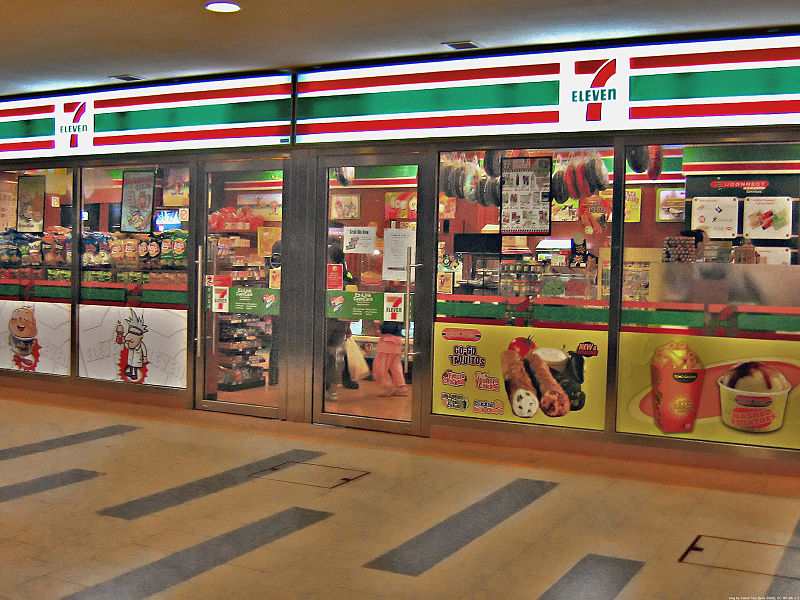 |
| 7-Eleven store in Singapore. Source: Calvin Teo, Wikimedia Commons |
I'm always interested to see how retail concepts get adapted to new markets around the world. It is particularly fascinating to me to note which traits prove universal and which are adapted to local tastes and market characteristics.
The New York Times recently ran a story about 7-Eleven stores in Indonesia that illustrated this phenomenon nicely. The merchandise is a mix of what one might call "global 7-Eleven cuisine" (e.g., Slurpees) and local favorites (fried rice). Equally notable are the extent of adaptations to operating practices. While the Indonesian 7-Elevens carry convenience items like 7-Elevens elsewhere, so much that goes on in the stores (seating areas, live music, wi-fi) is geared toward getting people to stick around in them. That's a stark contrast with the 7-Eleven down the hill from my house, which is plastered with signs that warn against loitering.
To me, the most interesting lesson here was that the chain's success depended not only on a willingness to be flexible about which operational aspects to adapt (or not) to local circumstances, but also on connecting with a gatekeeper to the market (in this case, a savvy franchisee) who was able to identify an unfilled, potentially lucrative market niche. From the way the story tells it, it was 7-11's good fortune that the franchisee persisted in pursuing a relationship with the company. A bit of good luck like this never hurts, either.
No comments:
Post a Comment